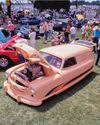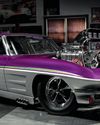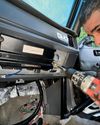
Before the advent of the automobile and our vast highway and interstate network, railroads were the medium that connected towns and cities, and the routes they traveled helped shape our county. As the railway system evolved, it played a vital role in transporting passengers and freight to new destinations. The Transcontinental Railroad's completion in 1869 connected the East and West making cross-country rail travel possible. You may notice when driving today's highways that towns and cities are generally spaced 50 to 100 miles apart. That spacing isn't coincidental-it was the distance that steam locomotives could travel before needing to refill its tender with water. Railroads set up "water stops" along their track route and settlements often emerged as locomotive replenishment afforded time for onloading and offloading passengers and freight. As highways were built, they often paralleled railways, and many of the once-trackside towns and cities remain today. Some even evolved into major metropolitan areas.
Early steam locomotives evolved into massive engineering marvels, but the operating principle remained largely the same as the steam engine developed by James Watt in 1776. While steam power was quite effective, steam locomotives were costly to operate and maintain. They consumed large volumes of water and fuel and the frequent replenishment stops lengthened passenger travel time. As highly mechanical machines, strict maintenance schedules had to be followed to maximize locomotive service life. Roundhouses and engine shops were strategically placed along the route where regular maintenance and repairs were carried out by an army of trained workers 24 hours a day.
This story is from the October 2022 edition of Hot Rod.
Start your 7-day Magzter GOLD free trial to access thousands of curated premium stories, and 9,000+ magazines and newspapers.
Already a subscriber ? Sign In
This story is from the October 2022 edition of Hot Rod.
Start your 7-day Magzter GOLD free trial to access thousands of curated premium stories, and 9,000+ magazines and newspapers.
Already a subscriber? Sign In

What Is Pro Street?
You know it when you see it.

Pro Street in Pure Vision
Builder Steve Strope weighs in on the Pro Street look and what he would build today.

THE GAS ERA LIVES ON
These vintage race cars chart the evolution of technology in the early days of drag racing.

MOTOR HEAD FOR LIFE
Scott Sullivan is one of the original Pro Street pioneers. He still builds cars today out of a small shop in Dayton, Ohio.

BRINGING BACK PRO STREET!
David Freiburger and Roadkill Garage built a Pro Street Nova.

SWEET ASPIRATIONS
Jerry and Matthew Sweet added an 800ci Pro Stock mountain motor to chase HOT ROD Drag Week's Pro Street NA Record.

Making Bad Decisions Badder
Bradley Gray's 1970 Nova is a Hybrid! It's a streetable Funny Car.

ART PROJECT
This Rad Rides by Troy-built '63 split-window Corvette went from restaurant prop to ripping up the street!

WHERE DO WE GO FROM HERE?
THE PRO STREET ERA PEAKED IN THE '80S. ARE WE IN THE BEGINNING OF A RESURGENCE?

Making Connections
Project T-top Coupe: We install a Terminator X Max for big power.